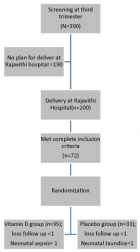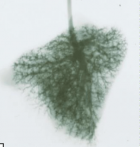Abstract
Commentary
What is the future for Scapholunate interosseous ligament reconstruction?
Amelia Carr, Saso Ivanovski, Randy Bindra and Cedryck Vaquette*
Published: 31 December, 2018 | Volume 2 - Issue 1 | Pages: 004-007
This opinion paper provides a summary of the current reconstructive surgical techniques for the scapholunate interosseous ligament (SLIL) and critically highlights their benefits and shortcomings. Due to limited success with direct repair of the ligament, current practice focuses on achieving biomechanical stabilization and does not allow for tissue regeneration to occur. In addition, the biomechanical behaviour of the ligament is still poorly described and understood, resulting in a very large variation in published mechanical parameters. Therefore, a thorough understanding of the biomechanics of the joint, via both experimental testing and numerical modelling is necessary for enabling the design of the next generation of implants in order to address mechanical stabilisation and regeneration.
Read Full Article HTML DOI: 10.29328/journal.aceo.1001004 Cite this Article Read Full Article PDF
Keywords:
Scapholunate interosseous ligament; Finite element analysis; 3D-printing
References
- Berger RA. The gross and histologic anatomy of the scapholunate interosseous ligament. J Hand Surg Am. 1996: 21: 170–178. Ref.: https://goo.gl/Mv8ocm
- Avery DM 3rd, Rodner CM, Edgar CM. Sports-related wrist and hand injuries: A review. J Orthop Surg Res. 2016; 11: 1–15. Ref.: https://goo.gl/jnGYRC
- Izadpanah A, Kakar SS. Acute Scapholunate Ligament Injuries: Current Concepts. Oper Tech Sports Med. 2016; 24: 108–116. Ref.: https://goo.gl/jCMsmQ
- Nikolopoulos FV, Apergis EP, Poulilios AD, Papagelopoulos PJ, Zoubos AV, et al. Biomechanical properties of the scapholunate ligament and the importance of its portions in the capitate intrusion injury. Clin Biomech. 2011: 26: 819–823. Ref.: https://goo.gl/DEYnws
- Kitay A, Wolfe SW. Scapholunate instability: Current concepts in diagnosis and management. J Hand Surg Am. 2008; 33: 998-1013. Ref.: https://goo.gl/Ceim2t
- Hofstede DJ, Ritt MJPF, Bos KE. Tarsal autografts for reconstruction of the scapholunate interosseous ligament: A biomechanical study, J Hand Surg Am. 1999; 24: 968-976. Ref.: https://goo.gl/XwCVco
- Müller M, Reik M, Sauerbier M, Germann G. A new bone-ligament-bone autograft from the plantar plates of the toes and its potential use in scapholunate reconstruction: An anatomical study. Ann Plast Surg. 2008; 61: 463–467. Ref.: https://goo.gl/cGVtzw
- Shin SS, Moore DC, McGovern RD, Weiss AP. Scapholunate ligament reconstruction using a bone-retinaculum-bone autograft: A biomechanic and histologic study. J Hand Surg Am. 1998; 23: 216–221. Ref.: https://goo.gl/shZVaA
- Svoboda SJ, Eglseder WA Jr, Belkoff SM. Autografts from the foot for reconstruction of the scapholunate interosseous ligament. J Hand Surg Am. 1995; 20: 980–985. Ref.: https://goo.gl/7Yg91w
- Weiss AP. Scapholunate Ligament Reconstruction Using a Bone-Retinaculum-Bone Autograft. J Hand Surg Am. 1998; 23A: 261–264. Ref.: https://goo.gl/VW4Eas
- Harvey EJ, Hanel D, Knight JB, Tencer AF. Autograft replacements for the scapholunate ligament: A biomechanical comparison of hand-based autografts. J Hand Surg Am. 1999; 24: 963-967. Ref.: https://goo.gl/amJypm
- Brunelli GA, Brunelli GR. A new technique to correct carpal instability with scaphoid rotary subluxation: a preliminary report. J Hand Surg Am. 1995; 20: S82-85. Ref.: https://goo.gl/CuWnw1
- McGrath T, Zivaljevic N. New Technique for Anatomic Reconstruction of the Scapholunate Ligament with Tendon Graft and Swive Lock Anchor Fixation: A Biomechanical Cadaveric Study: Not a clinical study. J Hand Surg Am. 2012; 37: 13. Ref.: https://goo.gl/bVDhbN
- Endress R, Woon CY, Farnebo SJ, Behn A, Bronstein J, et al. Tissue-engineered collateral ligament composite allografts for scapholunate ligament reconstruction: an experimental study. J Hand Surg Am. 2012; 37: 1529-1537. Ref.: https://goo.gl/FkFoo1
- Eng K, Wagels M, Tham SK. Cadaveric scapholunate reconstruction using the ligament augmentation and reconstruction system. J Wrist Surg. 2014; 3: 192-197. Ref.: https://goo.gl/5TUhJw
- Gittard SD, Narayan RJ, Lusk J, Morel P, Stockmans F, et al. Rapid prototyping of scaphoid and lunate bones. Biotechnol J. 2009; 4: 129-134. Ref.: https://goo.gl/nQM159
- Costa PF, Vaquette C, Baldwin J, Chhaya M, Gomes ME, et al. Biofabrication of customized bone grafts by combination of additive manufacturing and bioreactor knowhow, Biofabrication. 2014; 6: 035006. Ref.: https://goo.gl/dDJ7Ki
- Costa PF, Vaquette C, Zhang Q, Reis RL, Ivanovski S, et al. Advanced tissue engineering scaffold design for regeneration of the complex hierarchical periodontal structure. J Clin Periodontol. 2014; 41: 283-294. Ref.: https://goo.gl/LLWF5Z
- Hamlet SM, Vaquette C, Shah A, Hutmacher DW3, Ivanovski S. 3-Dimensional functionalized polycaprolactone-hyaluronic acid hydrogel constructs for bone tissue engineering. J Clin Periodontol. 2017; 44: 428-437. Ref.: https://goo.gl/U4SZ88
- Lee SJ, Lee D, Yoon TR, Kim HK, Jo HH, et al. Surface Modification of 3D Printed Polycaprolactone Constructs via a Solvent Treatment: Impact on Physical and Osteogenic Properties. ACS Biomater Sci Eng. 2019; 5: 318–328. Ref.: https://goo.gl/hwgrd2
- Sudheesh Kumar PT, Hashimi S, Saifzadeh S, Ivanovski S, Vaquette C. Additively manufactured biphasic construct loaded with BMP-2 for vertical bone regeneration: A pilot study in rabbit. Mater Sci Eng C Mater Biol Appl. 2018; 92: 554-564. Ref.: https://goo.gl/GbFPrJ
- Vaquette C, Fan W, Xiao Y, Hamlet S, Hutmacher DW, et al. A biphasic scaffold design combined with cell sheet technology for simultaneous regeneration of alveolar bone/periodontal ligament complex. Biomaterials. 2012; 33: 5560-5573. Ref.: https://goo.gl/rdCczh
- Alonso-Rasgado T, Zhang QH, Jimenez-Cruz D, Bailey C, Pinder E, et al. Evaluation of the performance of three tenodesis techniques for the treatment of scapholunate instability: flexion-extension and radial-ulnar deviation. Med Biol Eng Comput. 2018; 56: 1091-1105. Ref.: https://goo.gl/j6pJ98
Figures:
Similar Articles
-
What is the future for Scapholunate interosseous ligament reconstruction?Amelia Carr,Saso Ivanovski,Randy Bindra,Cedryck Vaquette*. What is the future for Scapholunate interosseous ligament reconstruction?. . 2018 doi: 10.29328/journal.aceo.1001004; 2: 004-007
Recently Viewed
-
Evaluation of Performance Research Nuclear Reactors' Steady-state and Kinetic Model AnalysesEsraa Fareed Saeed*. Evaluation of Performance Research Nuclear Reactors' Steady-state and Kinetic Model Analyses. Ann Civil Environ Eng. 2024: doi: 10.29328/journal.acee.1001064; 8: 039-044
-
Accidents at Waste Storage Facilities: Methods of Struggle with the Consequences of AccidentsE Argal*. Accidents at Waste Storage Facilities: Methods of Struggle with the Consequences of Accidents. Ann Civil Environ Eng. 2024: doi: 10.29328/journal.acee.1001063; 8: 032-038
-
Evaluation of Soil Water Characteristic Curves of Boron added Sand-bentonite Mixtures using the Evaporation TechniqueSukran Gizem Alpaydin*, Yeliz Yukselen-Aksoy. Evaluation of Soil Water Characteristic Curves of Boron added Sand-bentonite Mixtures using the Evaporation Technique. Ann Civil Environ Eng. 2024: doi: 10.29328/journal.acee.1001062; 8: 025-031
-
Drinking-water Quality Assessment in Selective Schools from the Mount LebanonWalaa Diab, Mona Farhat, Marwa Rammal, Chaden Moussa Haidar*, Ali Yaacoub, Alaa Hamzeh. Drinking-water Quality Assessment in Selective Schools from the Mount Lebanon. Ann Civil Environ Eng. 2024: doi: 10.29328/journal.acee.1001061; 8: 018-024
-
The efficacy of complex Decongestive Physiotherapy in patients with Bilateral Primary Lower Extremity Lymphedema and Untreatable multiple health conditions: A Case ReportHümeyra Kiloatar PT*. The efficacy of complex Decongestive Physiotherapy in patients with Bilateral Primary Lower Extremity Lymphedema and Untreatable multiple health conditions: A Case Report. J Nov Physiother Rehabil. 2017: doi: 10.29328/journal.jnpr.1001011; 1: 093-098
Most Viewed
-
Evaluation of Biostimulants Based on Recovered Protein Hydrolysates from Animal By-products as Plant Growth EnhancersH Pérez-Aguilar*, M Lacruz-Asaro, F Arán-Ais. Evaluation of Biostimulants Based on Recovered Protein Hydrolysates from Animal By-products as Plant Growth Enhancers. J Plant Sci Phytopathol. 2023 doi: 10.29328/journal.jpsp.1001104; 7: 042-047
-
Sinonasal Myxoma Extending into the Orbit in a 4-Year Old: A Case PresentationJulian A Purrinos*, Ramzi Younis. Sinonasal Myxoma Extending into the Orbit in a 4-Year Old: A Case Presentation. Arch Case Rep. 2024 doi: 10.29328/journal.acr.1001099; 8: 075-077
-
Feasibility study of magnetic sensing for detecting single-neuron action potentialsDenis Tonini,Kai Wu,Renata Saha,Jian-Ping Wang*. Feasibility study of magnetic sensing for detecting single-neuron action potentials. Ann Biomed Sci Eng. 2022 doi: 10.29328/journal.abse.1001018; 6: 019-029
-
Pediatric Dysgerminoma: Unveiling a Rare Ovarian TumorFaten Limaiem*, Khalil Saffar, Ahmed Halouani. Pediatric Dysgerminoma: Unveiling a Rare Ovarian Tumor. Arch Case Rep. 2024 doi: 10.29328/journal.acr.1001087; 8: 010-013
-
Physical activity can change the physiological and psychological circumstances during COVID-19 pandemic: A narrative reviewKhashayar Maroufi*. Physical activity can change the physiological and psychological circumstances during COVID-19 pandemic: A narrative review. J Sports Med Ther. 2021 doi: 10.29328/journal.jsmt.1001051; 6: 001-007

HSPI: We're glad you're here. Please click "create a new Query" if you are a new visitor to our website and need further information from us.
If you are already a member of our network and need to keep track of any developments regarding a question you have already submitted, click "take me to my Query."

















































































































































